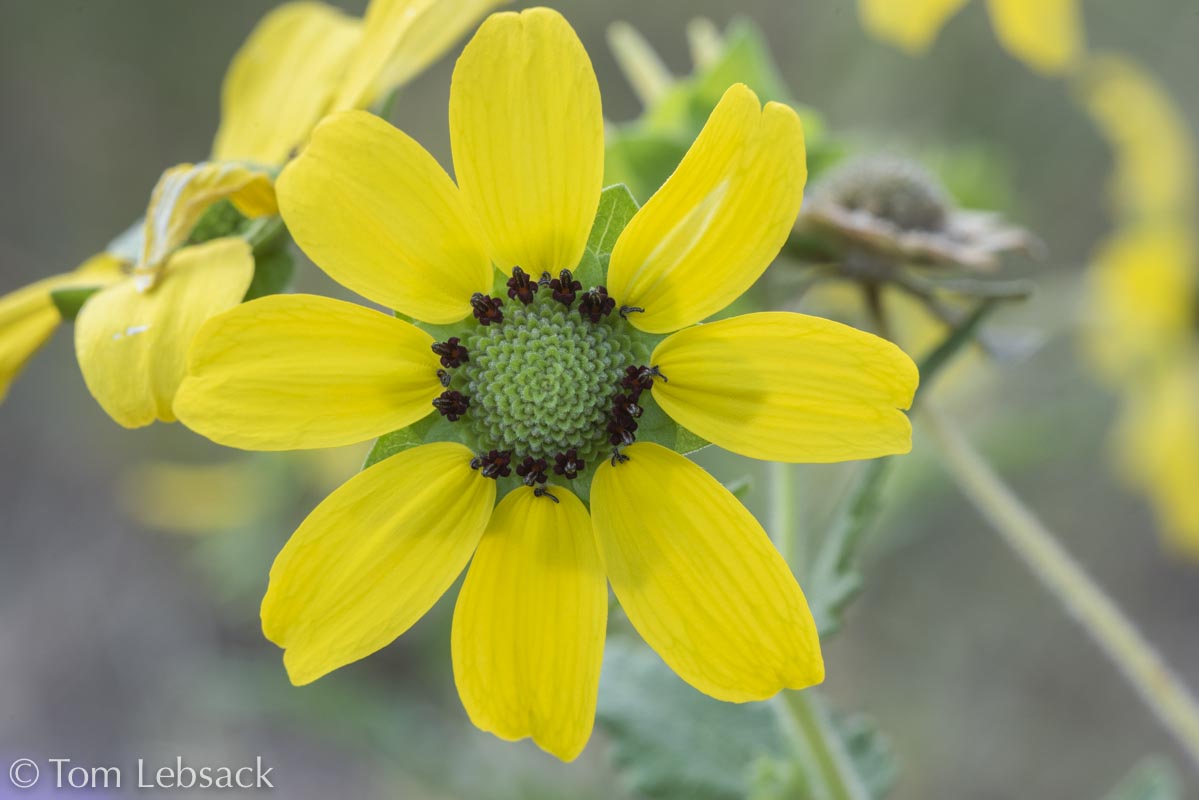Texas Wildbuds
Berlandiera texana
(Texas Greeneyes)
| Scientific Name | Berlandiera texana (Berlandiera betonicifolia) | USDA PLANTS Symbol | BEBE4 |
| Common Name | Texas Greeneyes | ITIS Taxonomic Serial No. | 36835 |
| Family | Asteraceae (Sunflower) | SEINet Reference |
Click Here |
| Description | Habitat Dry, rocky, calcareous and sandy soils, open woodlands and edges, roadsides and valleys. Plant: Erect perennial 2 to 4 feet tall, hairy stems usually unbranched up to the inflorescence. Leaves: Deep green triangular to ovate, 1-1/2 to 6 inches long and 3/4 to 2-3/8 inches wide, crowded and sessile above, more evenly-spaced below and short-petiolate ; evenly-toothed edges; fine hairs on both surfaces. Inflorescence: A few composite flower heads in terminal corymb clusters, each up to 2 inches across with 5 to 12 yellow rays with greenish veins visible on the back sides; maroon/red disk florets subtended by green phyllaries that give the disk an overall green appearance; involucre phyllaries (bracts) below rays are wide velvety and overlapping. Blooming Period: June to September. References: "Manual of the Vascular Plants of Texas" by Correll and Johnston, "Shinners & Mahler’s Flora of North Central Texas" by Diggs, Lipscomb and O’Kennon, "Wildflowers of the Texas Hill Country" by Marshall Enquist, Missouri Botanical Garden and SEINet Note: There is some confusion about the species name with some authors using B. texana and others using B. betonicifolia. As far as I can tell, they are the same. |
BONAP Distribution Map Map Color Key |
Texas Status: Native |
Banner photo of Castilleja indivisa and Lupinus ssp. taken along FM 1323 north of Johnson City, Blanco County
© Tom Lebsack 2025
Every attempt is made to provide accurate, up-to-date, and relevant information, but the completeness or accuracy of any information presented on this website cannot be guaranteed. I use authoritative references to insure high standards of accuracy and review and update the information frequently.






